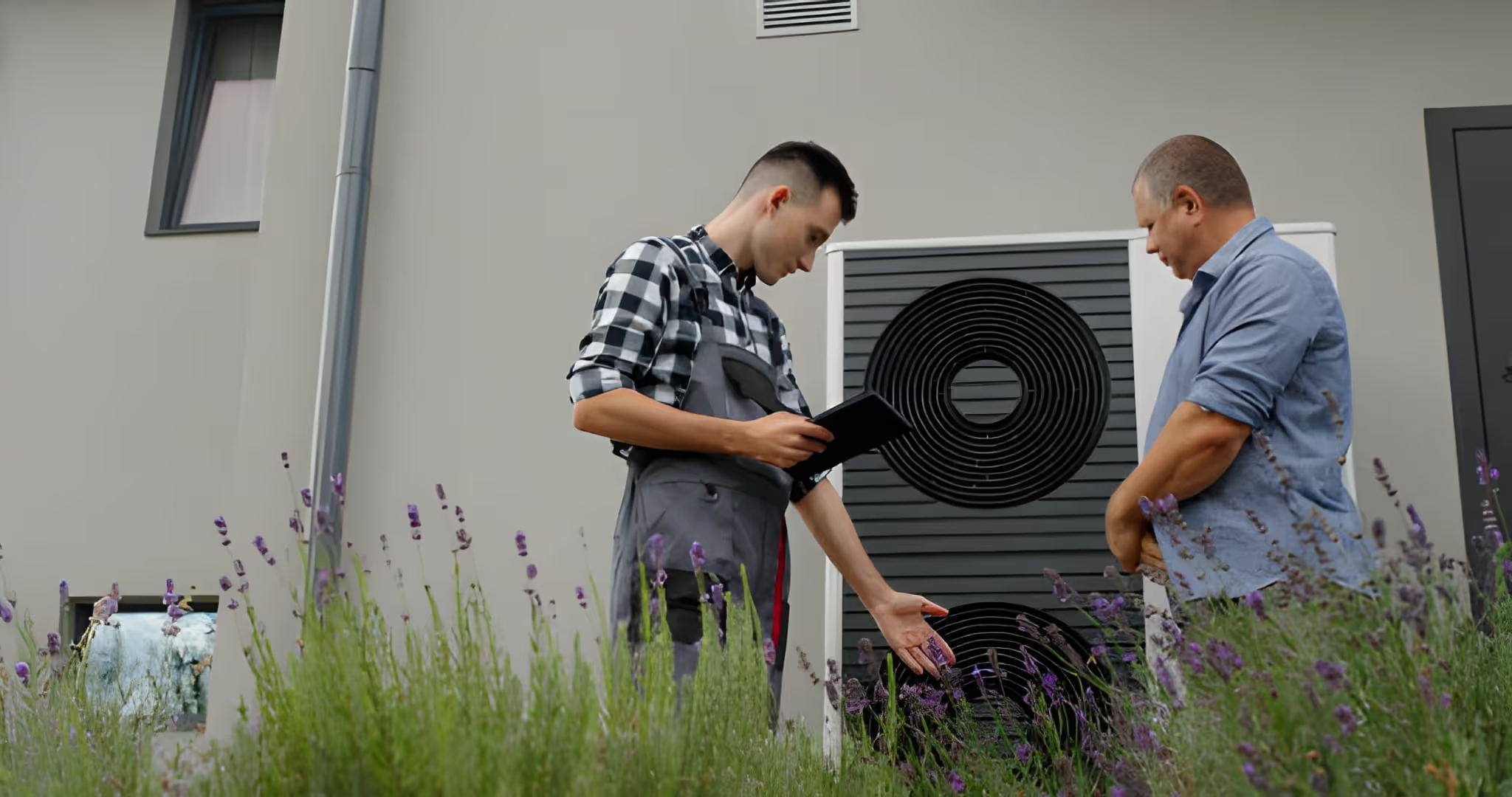Heat Pump Maintenance in Princeton, TX
Keeping your heat pump running efficiently and reliably in Princeton, TX matters all year. Summers here bring high heat and humidity that push cooling systems hard, while mild winters and occasional cold snaps require reliable heating performance. Regular, seasonal maintenance prevents costly failures during peak demand, restores lost efficiency, and extends the life of your equipment so your home stays comfortable when you need it most.

Why seasonal heat pump maintenance is important in Princeton, TX
Princeton homes face a combination of heavy cooling loads, high humidity, and seasonal pollen and dust. Those conditions accelerate coil fouling, clog filters, and increase compressor workload. Untreated small problems—low refrigerant, dirty coils, or loose electrical connections—can lead to higher utility bills, uneven comfort, and premature component failure. Timely maintenance identifies and corrects issues before they become emergency repairs.
Common heat pump problems Princeton homeowners see
- Reduced cooling or heating capacity — often from dirty coils, clogged filters, or low refrigerant.
- Higher energy bills — caused by restricted airflow, degraded refrigerant charge, or failing electrical components.
- Short cycling — frequent on/off cycles that stress the compressor, typically due to control issues, refrigerant imbalance, or airflow restrictions.
- Excessive humidity indoors — weak dehumidification when the system can’t run long enough, or when the coils are dirty.
- Outdoor unit icing or frequent defrost cycles — can indicate refrigerant issues or sensor faults.
- Noisy operation — from loose panels, worn fan motors, or failing compressors and capacitors.
What a professional seasonal heat pump service includes
Routine maintenance should be done at least twice a year—spring for cooling season prep and fall for heating season prep. A comprehensive visit typically includes:
- Visual inspection of indoor and outdoor units for corrosion, debris, and physical damage.
- Filter check and replacement or cleaning recommendations.
- Coil cleaning (evaporator and condenser) to restore heat transfer efficiency.
- Refrigerant level check and troubleshooting of leaks if levels are low.
- Electrical safety and performance tests: voltage, amp draw, contactor and capacitor condition, and secure wiring.
- Thermostat calibration and control sequence verification.
- Airflow verification: measuring static pressure and supply/return temperatures to confirm proper airflow across the coil.
- Performance tuning: checking superheat/subcooling when needed, adjusting metering device settings, and optimizing defrost controls.
- Condensate drain inspection and cleaning to prevent overflow and mold growth.
- System operation test in both heating and cooling modes to verify steady cycle behavior and comfort levels.
Each step focuses on efficiency, reliability, and safety to return the system to factory-like performance.
Diagnostic checks explained in plain language
- Refrigerant check — Low refrigerant makes your heat pump work harder. Technicians measure pressure and temperature to confirm the correct charge; they also inspect for leaks.
- Coil and filter inspection — Dirty coils and clogged filters block airflow and lower cooling capacity. Cleaning restores capacity and reduces runtime.
- Electrical tests — Loose or failing electrical components cause intermittent operation or failures. Measuring voltage and current prevents dangerous faults and protects the compressor.
- Airflow assessment — Proper airflow is essential for comfort and energy efficiency. Measuring supply and return temperatures and static pressure finds restrictions in ducts or stuck dampers.
Typical repairs and solutions discovered during maintenance
- Cleaning or replacing filters and cleaning evaporator/condenser coils to restore airflow and heat transfer.
- Repairing or replacing capacitors, contactors, or fan motors that show wear or abnormal amp draw.
- Locating and repairing refrigerant leaks, then recharging the system to correct levels.
- Adjusting or replacing thermostats and sensors to correct short cycling or temperature swings.
- Clearing condensate drains, checking drain pans, and installing float switches if needed to prevent water damage.
- Sealing or advising on duct issues when static pressure or temperature imbalances indicate distribution problems.
Maintenance agreements and why they matter
A maintenance agreement provides scheduled Tune-Ups, documented service history, and predictable upkeep—especially valuable in Princeton’s climate. Typical plan features include:
- Scheduled spring and fall inspections to prepare for high cooling and heating demands.
- Priority scheduling for service visits during peak seasons.
- Detailed service reports that record measurements, repairs, and recommendations.
- Discounts on parts and labor for covered repairs.
- Reminder notifications to help you stay on a preventative schedule.
- Support for warranty compliance, since many manufacturers require annual maintenance to keep warranties valid.
These plans reduce unexpected repair costs, improve system longevity, and maintain peak efficiency through busy seasons.
How regular maintenance benefits Princeton homeowners
- Lower energy bills — cleaned coils, correct refrigerant, and balanced airflow reduce runtime and energy use.
- Improved comfort — consistent temperatures and better humidity control.
- Increased reliability — fewer emergency breakdowns during extreme heat or cold.
- Extended equipment life — preventive care delays major component failures and replacement costs.
- Safety and indoor air quality — electrical checks reduce risk, and clean condensate drains and filters help control allergens and mold.
Quick homeowner tips between professional visits
- Replace or clean filters every 1 to 3 months depending on usage and pets.
- Keep at least two feet of clearance around the outdoor unit and remove leaves, grass, and debris.
- Program the thermostat for consistent comfort and avoid wide temperature swings that stress the system.
- Check supply registers for blockages and keep return vents open.
- Keep gutters and landscaping directed away from the outdoor unit to prevent moisture buildup.
Seasonal Tune-Ups are the smartest way to protect your investment, keep energy costs under control, and ensure reliable comfort throughout Princeton’s hot summers and variable winters. Regular maintenance catches small problems early and preserves the performance you expect from your heat pump.

Flexible Financing Options
Explore our range of flexible financing options designed to suit your needs and budget.













